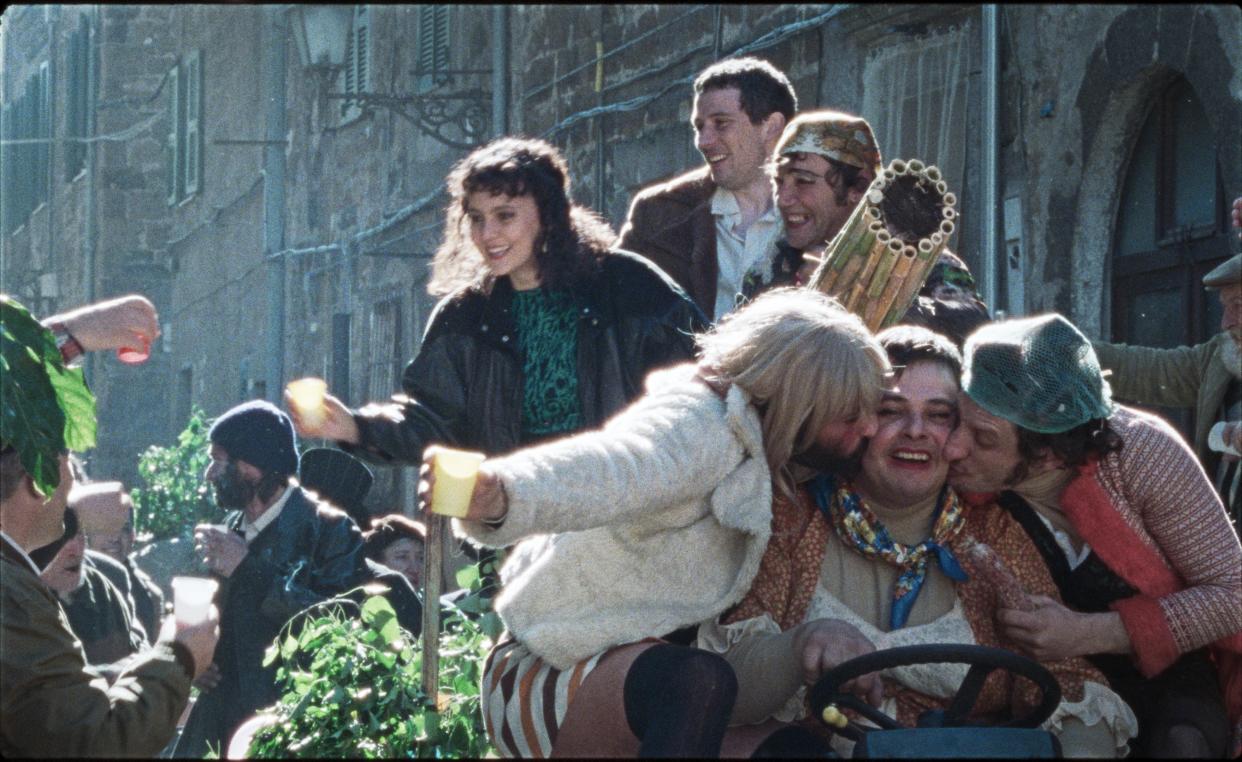‘La Chimera’ Review: Josh O’Connor Is a Grieving Tomb Raider in the Best Indiana Jones Movie of the Year

- Oops!Something went wrong.Please try again later.
- Oops!Something went wrong.Please try again later.

Editor’s Note: This review originally published during the 2023 Cannes Film Festival. Neon will release “La Chimera” in theaters March 29, 2024.
Just when it seemed like Cannes couldn’t get any worse for “Indiana Jones and The Dial of Destiny,” it turns out that James Mangold’s $300 million sequel wasn’t even the festival’s best movie about a sad and grumpy archeologist who chases a band of tomb raiders across the waters of Italy in order to stop them from selfishly exploiting a priceless artifact from before the birth of Christ. What are the odds?
More from IndieWire
Strange as that coincidence might be, it’s no surprise that Alice Rohrwacher’s new film is better than a Disney blockbuster that happens to share the same general milieu, but it’s worth pointing out that the arthouse version of this story is far more entertaining than the studio blockbuster take. It’s also shorter (if only just), sexier (by a lot), and Isabella Rossellini-er (imagine her doing a catty, live-action riff on her character from “Marcel the Shell with Shoes On”). It even has a better villain, played to perfection by an obvious but unexpected European star whose performance here could be slotted into a summer tentpole without missing a beat.
But enough kicking dirt on an old relic that should never have been dusted off again in the first place — there’s a new discovery to celebrate. The third and most romantic installment in Rohrwacher’s informal trilogy exploring the relationship between Italy’s past and present, “La Chimera” finds the Tuscan filmmaker returning to the rustic charm and eternal regret of “The Wonders” and “Happy as Lazzaro” in order to stretch them across a richly textured canvas that spans from ancient Etruria to “The Crown.”
It begins with a man played by Josh O’Connor — famously not Italian — dreaming of the woman he loved and lost. His name is Arthur, her name was Beniamina, and this idyllic vision of their reunion is rudely interrupted by a ticket-taker aboard a gorgeous country train as it rumbles across the Florentine countryside during the mid 1980s. “Sorry, you’ll never know how it ends now,” the ticket-taker chortles.
But Arthur isn’t one to give up. Legend tells of a buried door that connects this world to the next, and this surly archaeologist is so hellbent on finding it that he’s become the leader of a ragtag gang of tombarolis — lovable grave-robbers, essentially — in the small village where his Beniamina once lived. He offers the group his sorcerer-like ability to dowse the location of ancient treasures, and in return they do the digging for him. Stealing 2,000-year-old pots and statues out of the earth isn’t exactly legal work (Arthur is returning from the latest of his many stints in jail when the film begins), but the group makes a decent profit by selling whatever they find to a mysterious local fence named Spartaco, who operates like a Bond villain from their secret lair atop the local animal hospital.
While that may sound like a sustainable existence for a mopey British ex-pat, Arthur is unwell. O’Connor — delivering most of his dialogue in near-fluent Italian that the other characters take pleasure in correcting at every opportunity — plays him like a man possessed. It’s not just the ticket-taker: Everyone who speaks to Arthur seems to be waking him from a dream that he was just starting to believe in, which helps to explain why the hulking Englishman is often just as short as he is tall.
Dressed in the same billowy white suit for almost the entire film (the linen growing dirtier with each scene as Arthur grows increasingly subsumed by his obsession with locating Beniamina), O’Connor’s exquisite performance seems to channel Harry Dean Stanton’s haunted turn in “Paris, Texas”; less wraith-like in its physicality, but similarly intangible, like a man being played by his own shadow. Arthur straddles the liminal space between life and death with the same rugged beauty that Rohrwacher traces the overlap between the sacred and the profane, and so the central question of “La Chimera” isn’t whether he’ll be able to find his lost love (who, by definition of the film’s title, must always remain a mirage), so much as whether he’ll be able to stop looking.
The only people who seem capable of distracting Arthur from that obsession are Beniamina’s ailing mother (Rossellini, hilarious as a poison-tongued Miss Havisham type who mercilessly teases anyone who steps foot in her derelict mansion), and the old woman’s new music student, a tone-deaf beauty (Carol Duarte plays the pointedly named Italia, serving Miranda July realness as a dotty local do-gooder with a penchant for unofficially adopting orphaned kids). If Beniamina is emblematic of the past, Italia naturally embodies the present. Might she be Arthur’s salvation?
The tombarolis mock Italia as a “broomstick,” while Arthur would seem to be more interested in a shovel, but his nascent affection for her is as layered and hard to parse as the movie’s own feelings about the Etruscan antiques that Arthur helps to unearth. The tombarolis see the things they steal as inanimate pieces of junk, and laugh at the ancients who never intended for them to be seen again — who buried their treasures as if they were pieces of their own souls. The most affecting of Rohrwacher’s playful flourishes, which include sped-up action and upside-down frames, shows a layer of skin disappearing from a tomb full of buried artifacts after they’re exposed to fresh air for the first time in 2,000 years, as if the mere act of laying eyes upon these things was enough to strip them of their beauty.
For Arthur, however, the invisible is the only real beauty left in this world, which lends a light irony to the unspeakable gorgeousness of Hélène Louvart’s cinematography. Alternating between 35mm, super 16, and 16mm (and assigning each format to a different aspect ratio, so that Arthur only dreams in super fuzzy 4:3), Louvart helps level the playing field between the imagined purity of the past and the pastel lycra that everyone wears in the present.
“La Chimera” gradually surrenders itself to Arthur’s mania. At one point, his obsession becomes so complete that I found myself wondering if all of the other characters we meet are spirits trapped between two different realms of existence. Even in the proper context, that read doesn’t make a ton of sense, but it sure would help to explain the unforgettable shot in the film’s opening minutes when Arthur pokes his head out of the train cabin to find everyone else aboard staring at him in the hallway, which might be as close as any live-action film has ever come to capturing the energy of “Spirited Away.”
Like all of the films in Rohrwacher’s trilogy, the bucolic first half of “La Chimera” gives way to a more industrialized and faster-paced second half, with the energy here ramping up towards something that could almost pass for an actual “Indiana Jones” movie — especially once Spartaco’s henchmen steal our tombaroli’s most valuable find. But even after a clearly defined group of “bad guys” emerges, Rohrwacher herself resists any sort of moral judgment.
Indeed, the film’s ending, however predictable it might be, is so poetic and affecting because it abides by an internal logic all its own. “Does it belong to everyone,” Italia asks of a derelict train station she discovers at one point, “or does it belong to no one?” It’s the ultimate question “La Chimera” asks of our relationship to the past, and one that this lush and lived-in adventure leaves tantalizingly open-ended, even if there’s precious little doubt as to when Arthur belongs, or to whom.
Grade: B+
“La Chimera” premiered at the 2023 Cannes Film Festival. Neon will release it in theaters later this year.
Best of IndieWire
Sign up for Indiewire's Newsletter. For the latest news, follow us on Facebook, Twitter, and Instagram.

